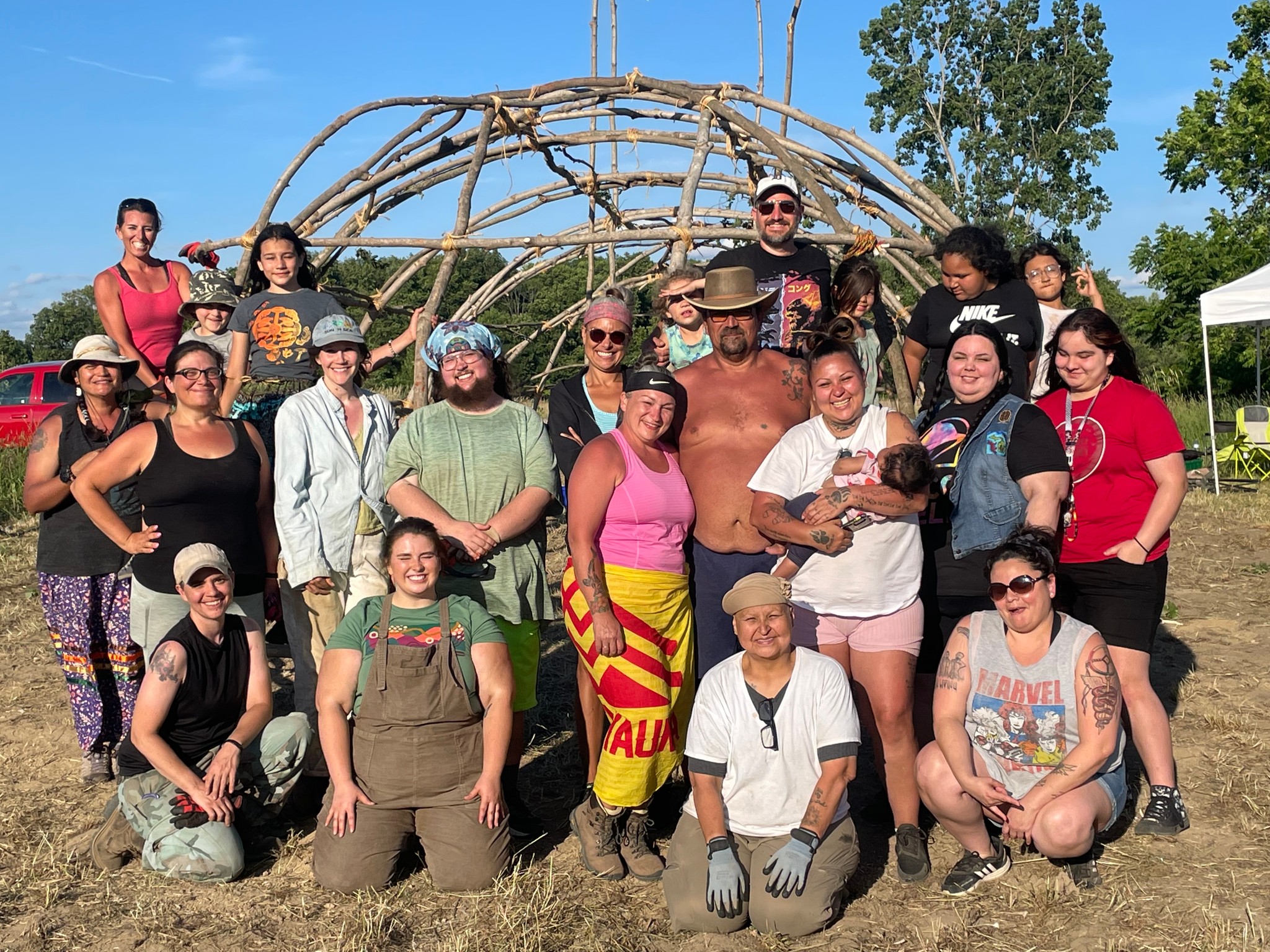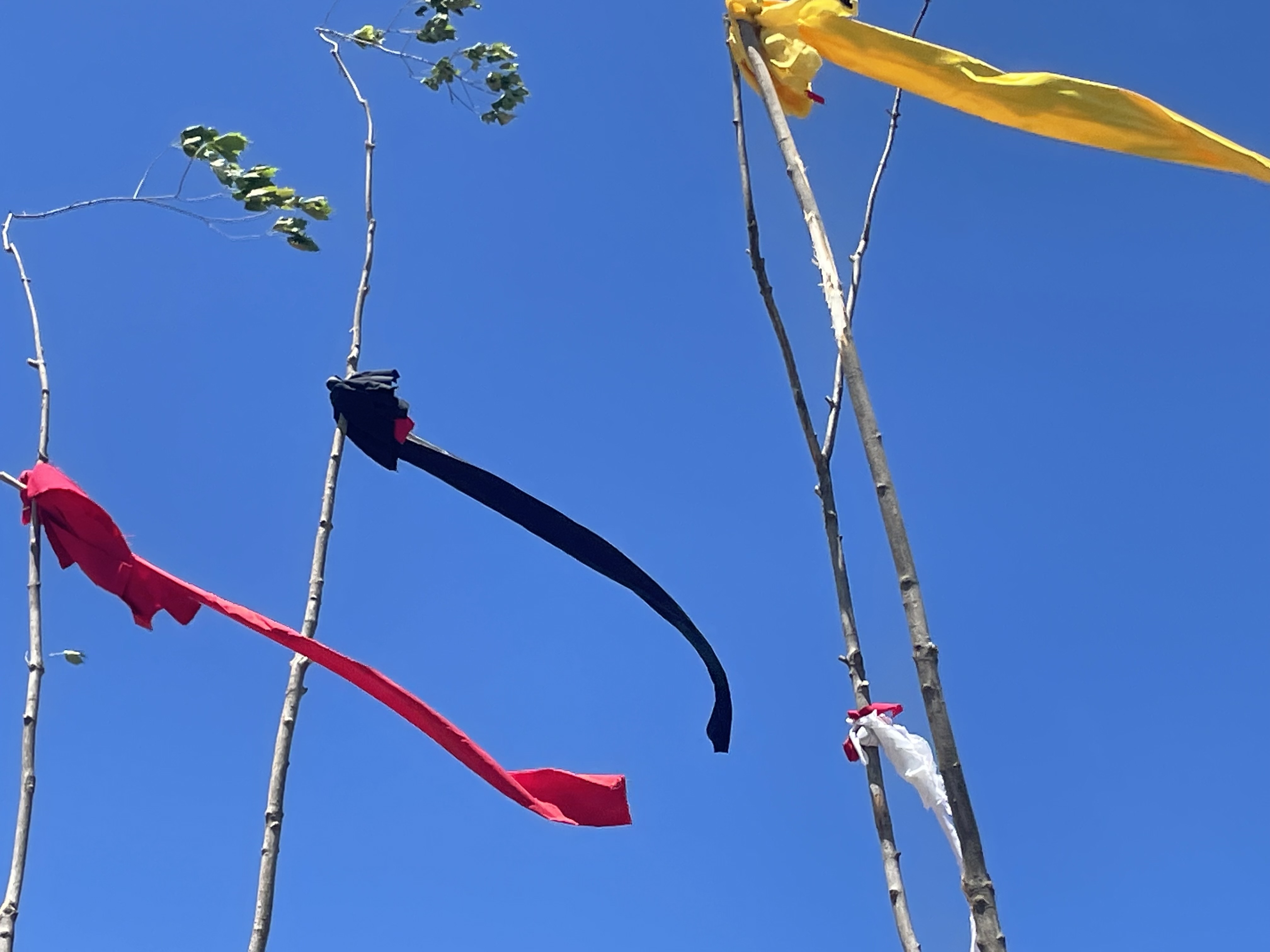
- Details
- By Levi Rickert and Neely Bardwell
ALLENDALE, Mich. – Some three dozen Native American students and community members spent their time and energy this weekend building a traditional Three Fires teaching lodge at the Grand Valley State University (GVSU) campus in Allendale, Mich.
The teaching lodge was the brainchild of GVSU Native American students who were taking Anishinaabek Lifeways classes taught by Andrea Riley-Mukavetz (Chippewa of Thames First Nation Band), assistant professor in the Liberal Arts Department.
“They imagined this lodge in my classes when I asked them to think about how they can support Indigenous sovereignty and cultural continuance while being a part of a colonial space like academia,” Riley-Mukavetz said.
Up until this past weekend, GVSU Native American students didn’t have a space on campus that was dedicated to them. Being Native in higher education can be daunting and exhausting. Not having a space on campus that is dedicated to being a safe space for Native students can increase feelings of nonbelonging.

“This weekend’s lodge building clearly showed us that our local and statewide community sees the importance of this lodge. Our Indigenous students now have space on campus to be more authentically themselves, and it has been a great weekend advancing our work here at GVSU making it safer for our Native American/Indigenous students,” Lin Bardwell (Little Traverse Bay Bands of Odawa Indians), Native American Student Initiative Coordinator, said to Native News Online.
Riley-Mukavetz and Bardwell hope that this teaching lodge will help fill that void and provide a space where their Native students can feel safe.
Funding for the project came from internal departments of the university, according to Riley-Mukavetz who wrote a proposal to secure funding for the construction of the teaching lodge. The funds allowed her to contract with Jonathan Rinehart (Little Traverse Bay Bands of Odawa Indians) to oversee the construction of the teaching lodge.
Building the lodge was an effort that took all weekend.
Saturday morning began with a traditional pipe ceremony. Students, community members, and even Native News Online staff were in the woods all day Saturday cutting down maple saplings and trimming them down with machetes and pruners. The saplings that averaged well over 12ft tall had to be dragged from the woods where they were cut down to be loaded up onto the trailer with 40 other saplings that had previously been collected.
Early Sunday, four poles were erected in the center of the teaching lodge that each had one of the four colors of the medicine wheel (yellow, red, black and white). Holes were dug into the clay soil to secure the poles used to frame the lodge. As the day progressed, the frame was put into place. By the end of Sunday, the 48’ by 16’ frame was completed.
“It is great that GVSU allowed our community space to create a sacred lodge that gives space for students and others in our community to gather,” Rinehart said.
“I am grateful to everyone who took the time to come together, share knowledge, and show Indigenous students that they can be their whole selves in higher education. For so many of us, that was not possible and sometimes, still isn't,” Riley-Mukavetz said.
“Jonathan, our lodge builder, said that lodges come about through a vision. For me and these students, our vision was to create a space where they didn't have to choose between seeking a degree and being Indigenous. Our vision was to remind non-native students that they are on Anishinaabek land and that we are still here: in their classrooms, teaching their courses, doing student support, and proudly learning our teachings,” Riley-Mukavetz continued.
“I appreciate Andrea and her students for dreaming this project up and love that their dream became a reality,” Bardwell said.
The teaching lodge is part of GVSU’s Sustainable Agriculture Project. The teaching lodge is planned to have a garden where the students have the opportunity to grow food and sacred medicines to share with those who utilize the lodge space.
https://nativenewsonline.net/education/three-fires-teaching-lodge-constructed-on-grand-valley-state-university-campu#sigProId8c9df28797
Help us defend tribal sovereignty.
At Native News Online, our mission is rooted in telling the stories that strengthen sovereignty and uplift Indigenous voices — not just at year’s end, but every single day.
Because of your generosity last year, we were able to keep our reporters on the ground in tribal communities, at national gatherings and in the halls of Congress — covering the issues that matter most to Indian Country: sovereignty, culture, education, health and economic opportunity.
That support sustained us through a tough year in 2025. Now, as we look to the year ahead, we need your help right now to ensure warrior journalism remains strong — reporting that defends tribal sovereignty, amplifies Native truth, and holds power accountable.
 The stakes couldn't be higher. Your support keeps Native voices heard, Native stories told and Native sovereignty defended.
The stakes couldn't be higher. Your support keeps Native voices heard, Native stories told and Native sovereignty defended.
Stand with Warrior Journalism today.
Levi Rickert (Potawatomi), Editor & Publisher

